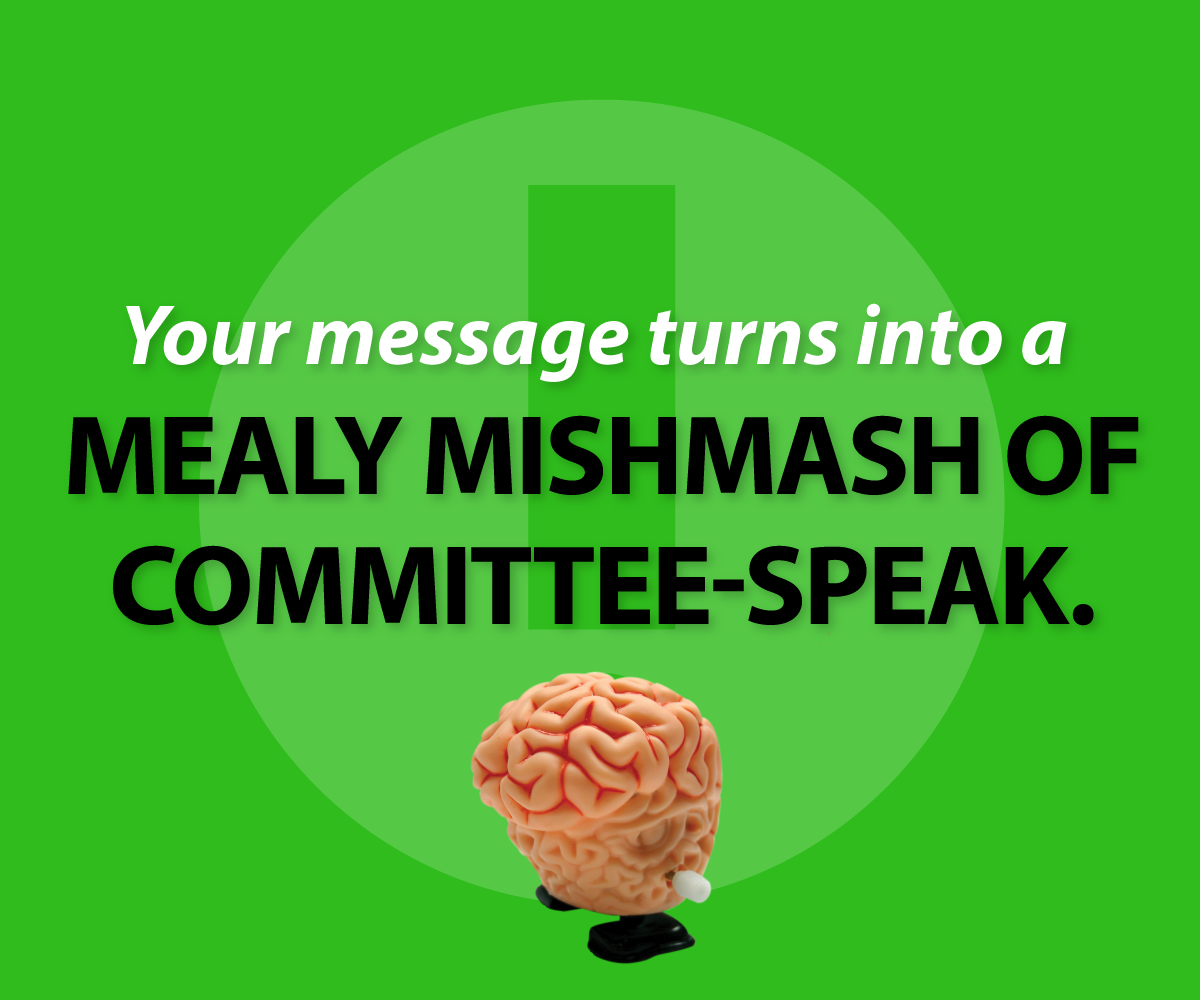
If you’re targeting everyone, you’re targeting no one.
Of course, every marketer knows “target marketing” is a good idea. After all, it just makes sense; get the right message in front of the right people, and success will rain down.
But when it’s time to build a creative brief and develop the message, people seem to get cold feet. “We’re targeting left-handed Moms 45-55 with less than 12 months left in their car loan… wait, doesn’t that mean we’re leaving out right-handed Dads under 30 who drive pickups?”
After a few more rounds of well-meaning inclusion, your carefully constructed target marketing ends up describing, well, every adult with a pulse. Your message turns into a mealy mishmash of committee-speak. It’s one of the central paradoxes of marketing – if you’re targeting everyone, you’re targeting no one.
Here’s how to sidestep this all-too-common trap.
People like people
Yeah, that seems obvious, but no one wants to hear from a committee or an institution. The best communication that makes the strongest and most emotional connections is by humans and for humans.
Obviously, you’re not going to start off copy for an email campaign with “Hello, left-handed middle-aged Mom with 2.5 kids! Boy do we ever have the car loan for you!”
But targeting a very specific type of person does help us strategists, writers and designers understand exactly who we’re writing and designing for.
The more specific the better – the more we can envision a real person, the more emotionally compelling we can make the creative.
Emotional energy is what matters
Emotion is what drives attention and decisions. And that’s the real secret; with more detailed and specific people in mind, we creative types can create more emotional energy. And that means more effectiveness.
Characterization
Of course, “left-handed middle-aged moms” isn’t much of a target description by itself. The main technique we use is characterization; exactly like a fiction writer, build a detailed description of a specific left-handed middle-aged Mom who’s getting close to paying off her car.
What’s her name? Where does she work? Most importantly, what’s she worried about, hoping for, dreaming of? How old are her kids? Obviously, they’re the emotional center of her life, so how does her car relate to that?
Pretty soon, it’s a lot clearer exactly what you’ll need to say to reach her heart.
Messages splash
So we’re writing and designing for one person who isn’t even real — aren’t we still in a paradox? Not at all.
A well-crafted, well-targeted message also has a lot of “splash”, or emotional overlap far outside its target. The perfect headline and the perfect image that perfectly targets left-handed middle-aged moms is still going to feel genuine, emotional, and appealing to young Dads, grandparents, and even right-handed people who prefer cats to kids.
People like people, remember? Humans are deeply empathetic, more alike than different.
And that’s why a message perfect for a specific person can also resonate powerfully for a lot of other people.
- Why credit union websites must be flexy and stretchy - July 15, 2025
- How to keep your credit union’s website clean and member-focused - July 1, 2025
- Credit union website analytics: mysteries we can’t explain - June 4, 2025
